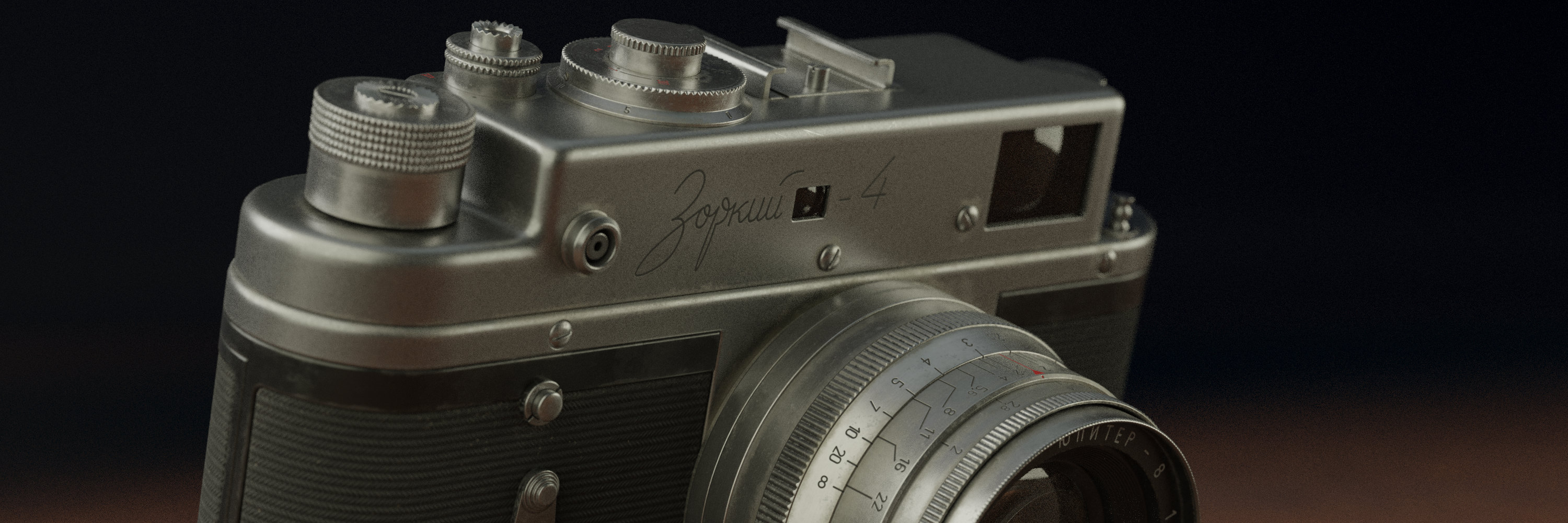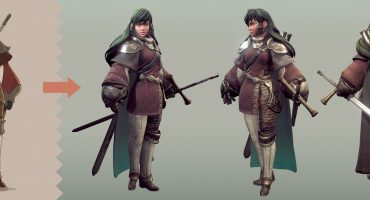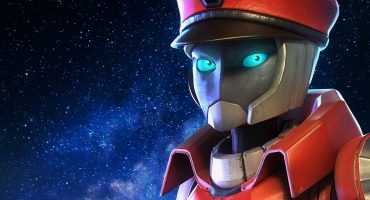About me
Hi, I’m Marek Polívka (Sketchfab, ArtStation) and I’m a 3D artist from Czechia. I mostly enjoy making various hard-surface things: mostly military vehicles and weapons but I like to occasionally try something different like this Zorki – 4 rangefinder camera.
I was always drawn to 3D in some way. I started out building plastic models of planes and tanks, then I spent quite a bit of time in Minecraft building large-scale models of things and finally a course at an IT university I attended properly introduced me to Blender. Beyond that, though, I’m mostly self-taught.
 A Tiger I started in Minecraft but never finished (more screenshots here)
A Tiger I started in Minecraft but never finished (more screenshots here)In the beginning, I luckily stumbled upon Notre Game, a small Czech studio working on Scratch Wars who gave me a chance to start out in the game development industry. After that, I moved on to WarFriends from About Fun. During my stay there I started working on Post Scriptum in my free time where I eventually started working full time (mostly on Plan Jaune and Day of Days) and finally, I joined Bohemia Interactive where I now work on a project that is yet to be announced.
Why this camera
I’ve been working on larger models at work that take a lot of time to finish and it started feeling somewhat monotonous. This caused me a creative itch I just had to scratch and I had to scratch it quickly.
I wanted to try something with materials I could play with that I haven’t properly done before. I wanted something that would take me a week at most to finish, I wanted it to look cool and I wanted to relax while making it.
I started looking into Soviet-era fighters (like the Mig-21) and American WWII bombers because of their unusual metallic finish and rivets. However, I always try being as accurate as possible so I probably wouldn’t let myself finish a model without a somewhat complete landing gear or other details. Those wouldn’t fit into the desired time frame.
Next, I wondered about a small tank with slightly fewer details than what I usually do to try some new approaches to the damage, weathering, etc. I almost settled on a Wiesel AWC but the complexity of the autocannon seemed daunting. It was not the relaxing task I had envisioned.
I then started thinking about smaller things. Looking at some rifles, I thought of some cool optical sights and through that, I got back to planes. I thought since Polikarpov I-16 fascinates me and I’d like to model it at some point, I could start with making its gunsight, the PAK-1 since it has nice details, interesting materials, and wouldn’t take too long to make.
The problem with this sight, however, was the lack of easily findable references. I wanted to do something like that though. Something precise and ideally vintage. I started thinking about old cameras and after a while, one photo caught my eye.
I saw the weathering on the lens, the elegant Cyrillic name of the camera, the beautiful vintage aesthetic, and I felt a need to recreate it, so I finally got to work.
Modeling
Modeling was fairly straightforward and all done in Blender. I approached it like any other high poly version of a model for a game, keeping the subdivision modifier in mind. That means, support edges everywhere!
Here’s a short tutorial:
- Set up some blueprints (or photos that are close enough to blueprints)

- Make a rough shape of the body

- Model the rest of the camera

It’s difficult to describe my approaches to modeling. They’ve become natural to me and I don’t really think about them anymore. Trying to describe them would produce a much longer article and I’d have to start a new model with the express purpose of writing that tutorial. Maybe some other time.
Texturing
This was the most fun part. I got to try creating some high-res materials since I don’t model small things very often. I started in Inkscape, preparing various bits that would look bad if I tried recreating them by hand. It’s often nice to prepare them in a vector graphics software.
Next, I set up the fabric. I started with a default Substance Painter material, created the pattern by mixing the variously blurred stripes pattern, and some noise textures.
Then I prepared the brushed metal material for the lens and the knobs. I started with one of the default steel materials in Substance Painter and added some brushing, color variation, and other weathering.
The other materials were somewhat more standard for me. The main material on the body is a slightly blue metal with a noise texture dealing with the grain + some basic scratches, and the dark metal is made a little uneven through a grunge texture + some hand-painted damage.
The Final Piece
And some Cycles renders:
Conclusion
I’m quite happy about this. I achieved what I set out to do, it made a pleasant distraction from the big projects at work and it has pushed my skills a little bit.
Thanks for reading and thanks to Sketchfab for noticing and featuring my work.














